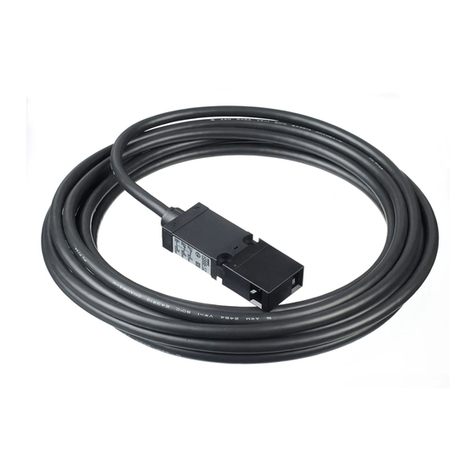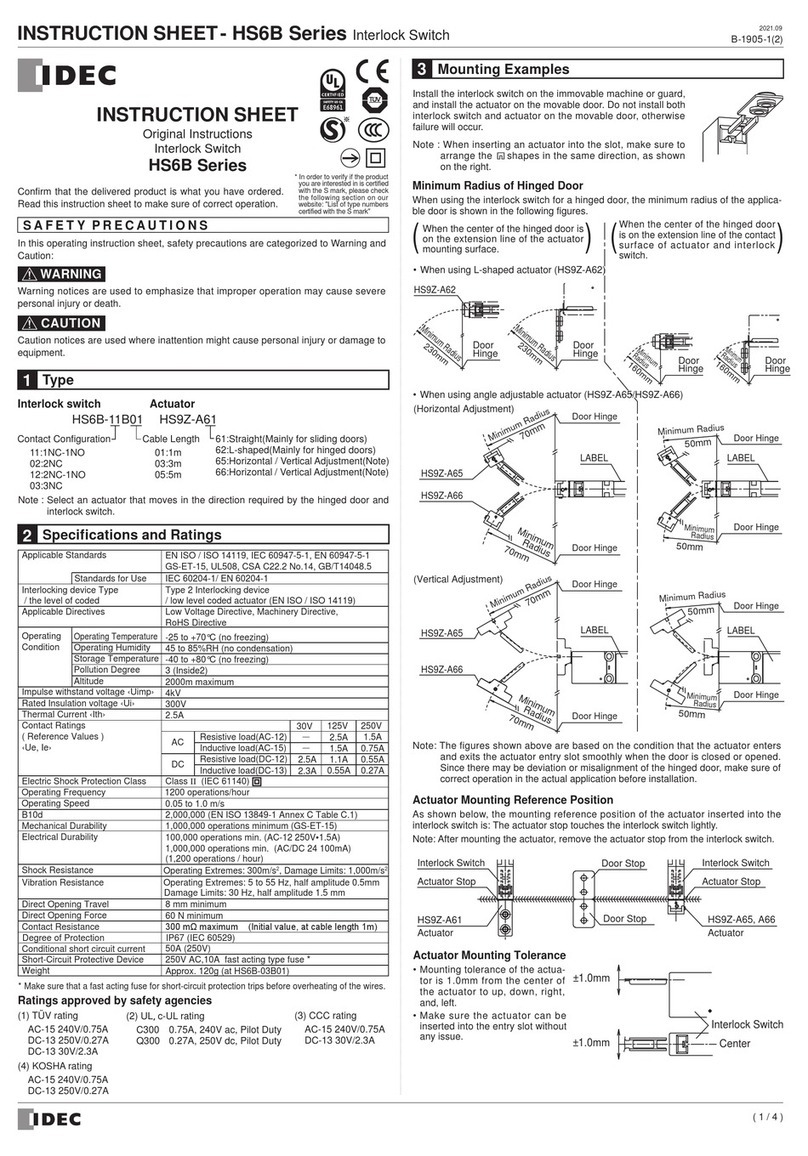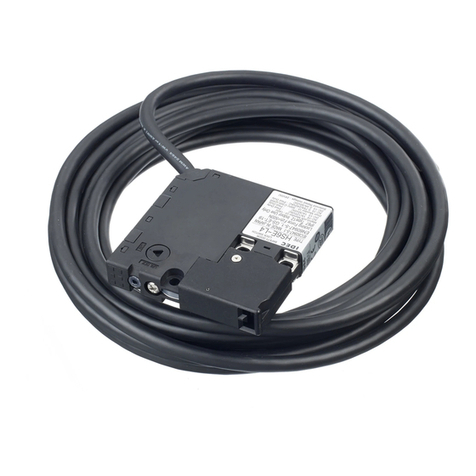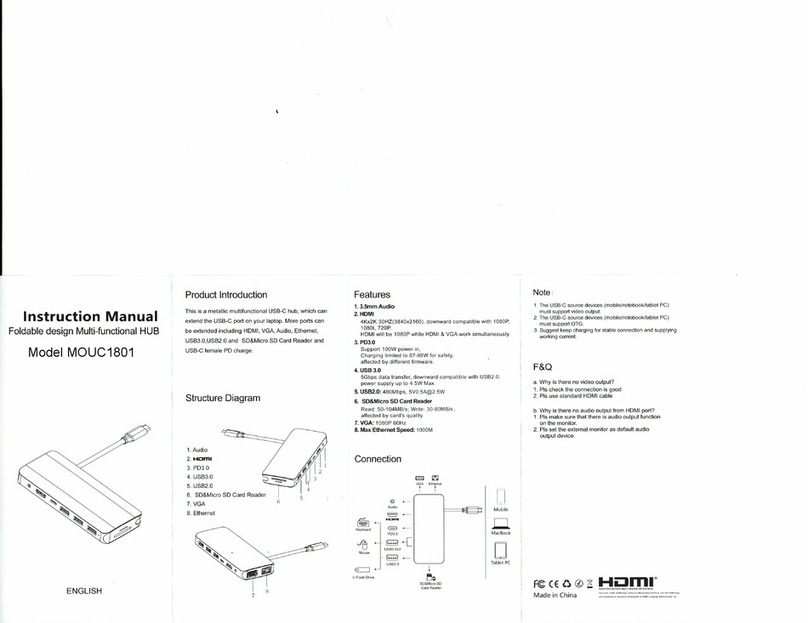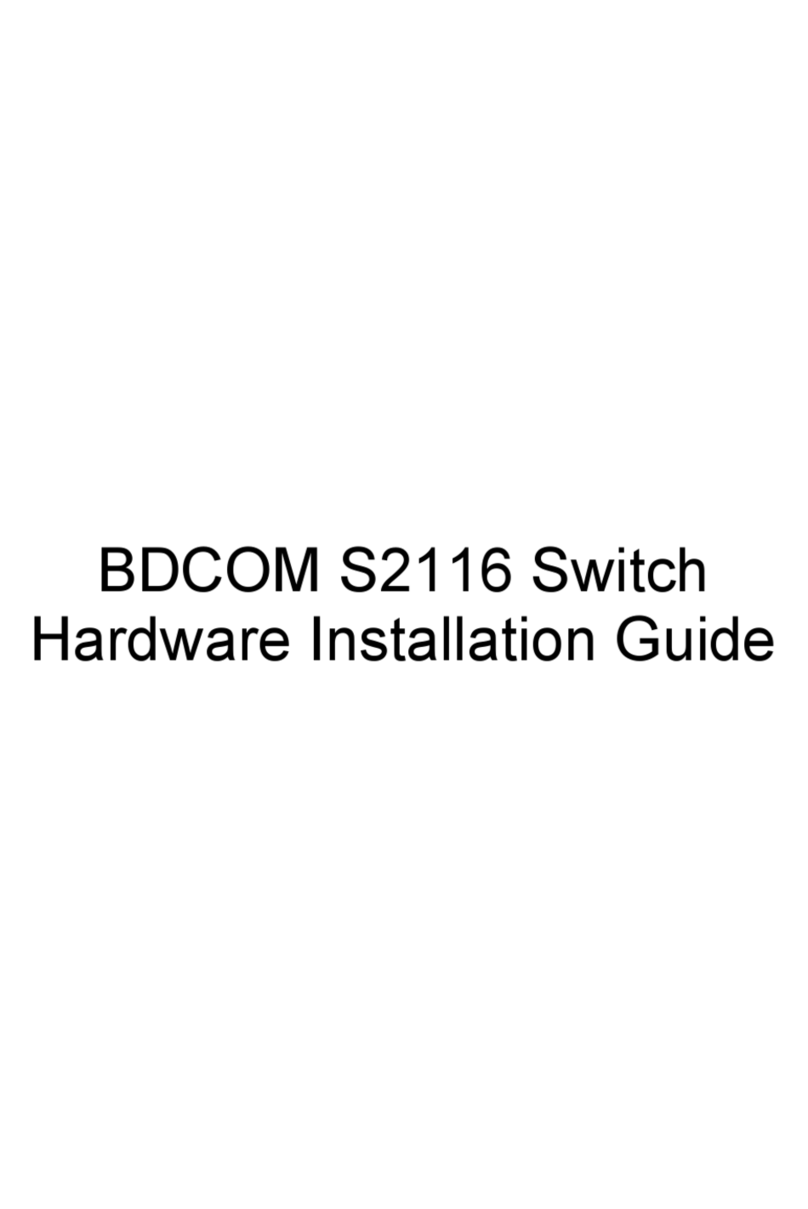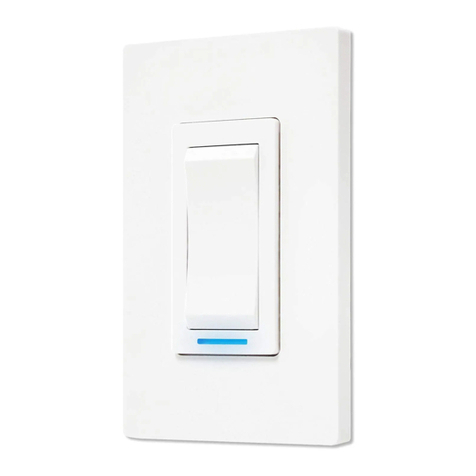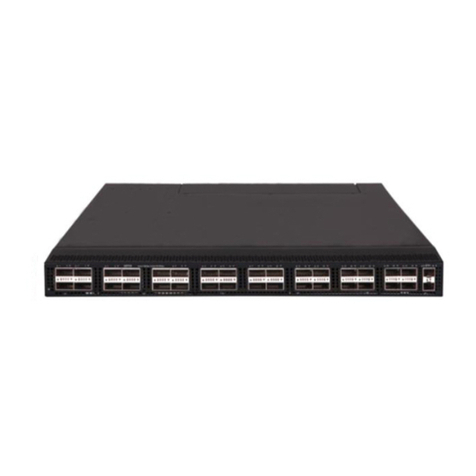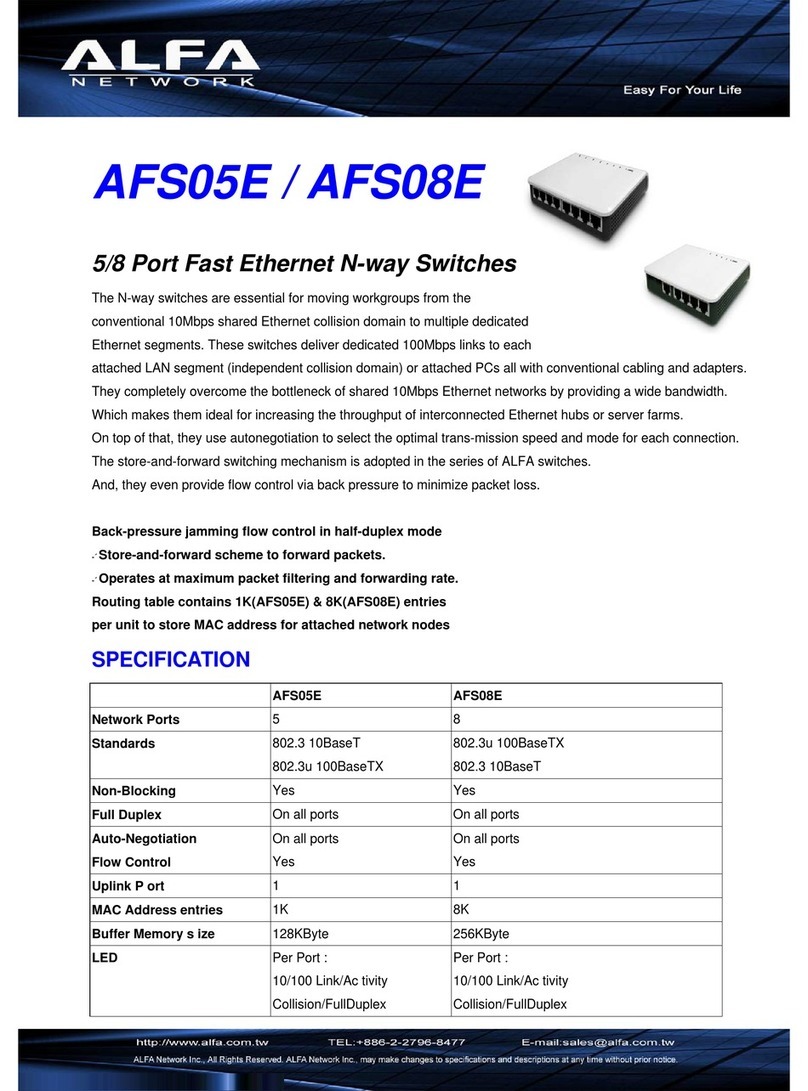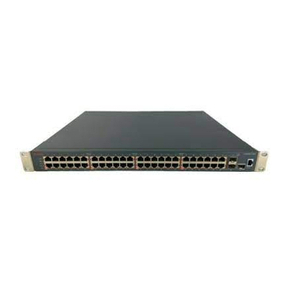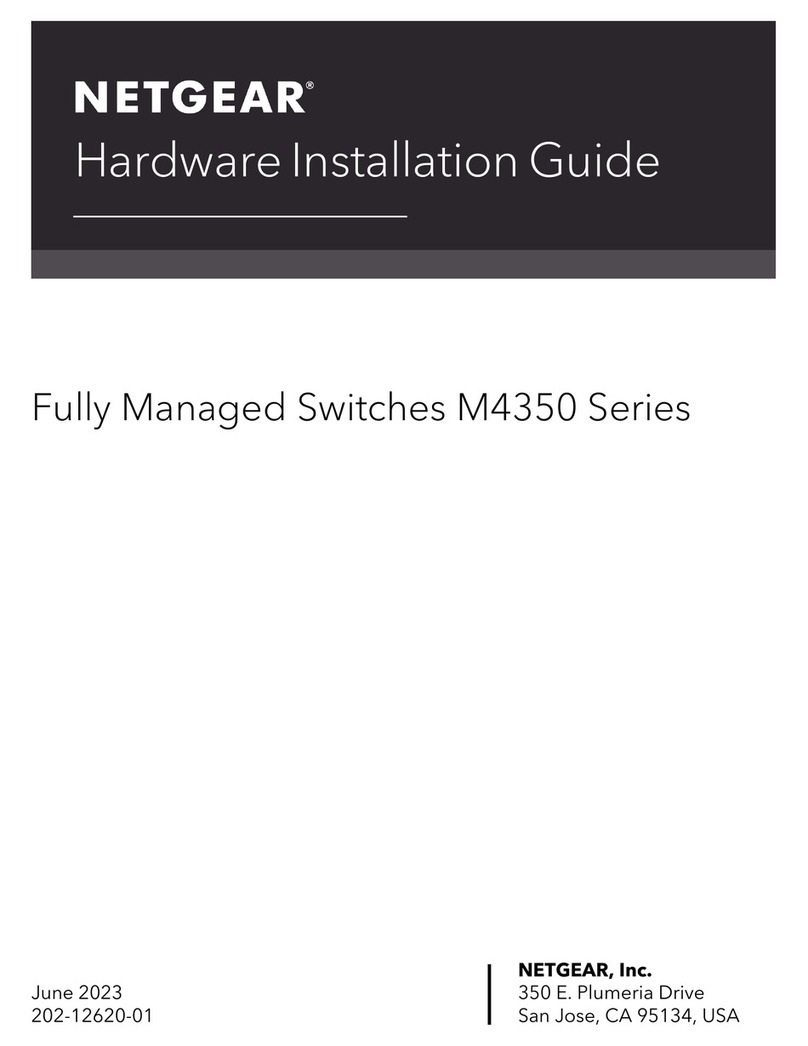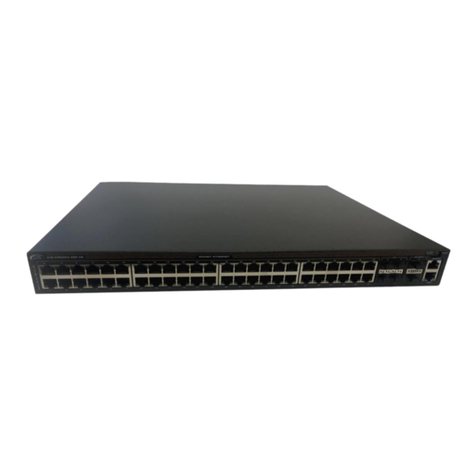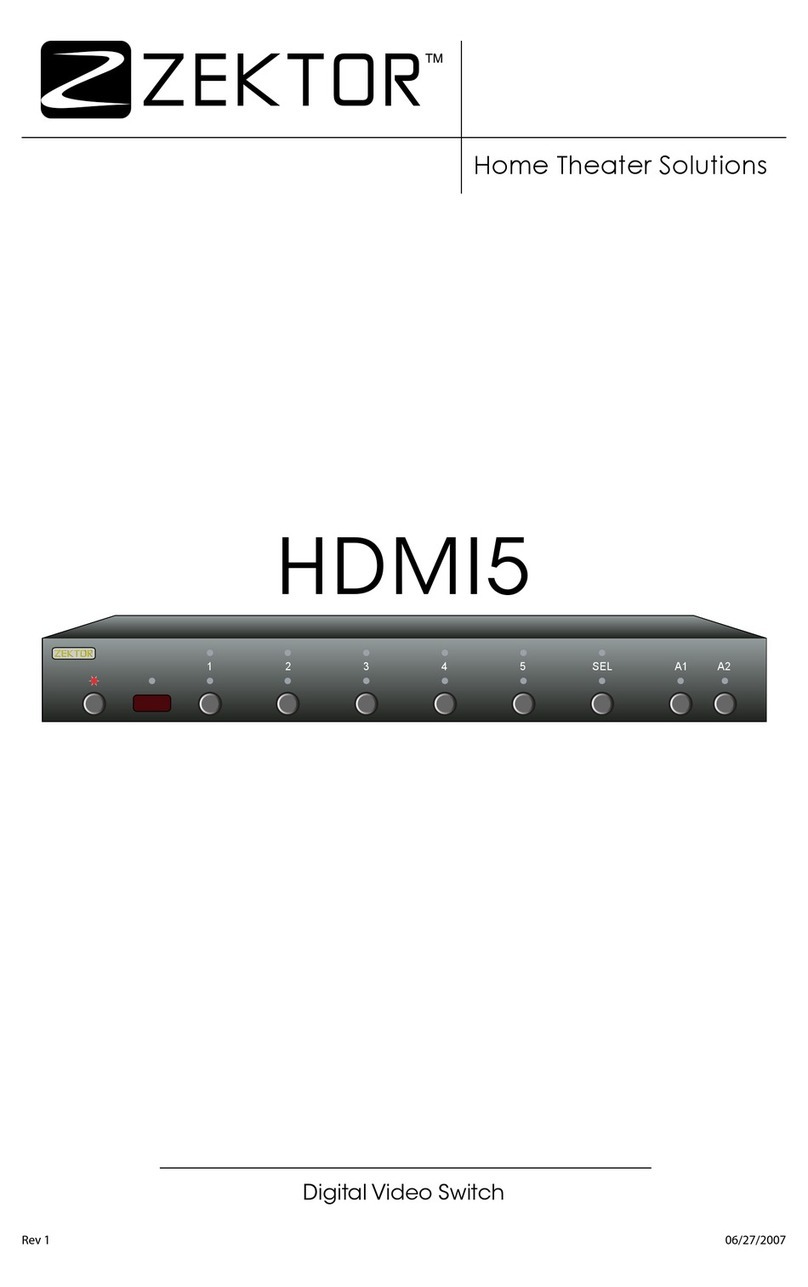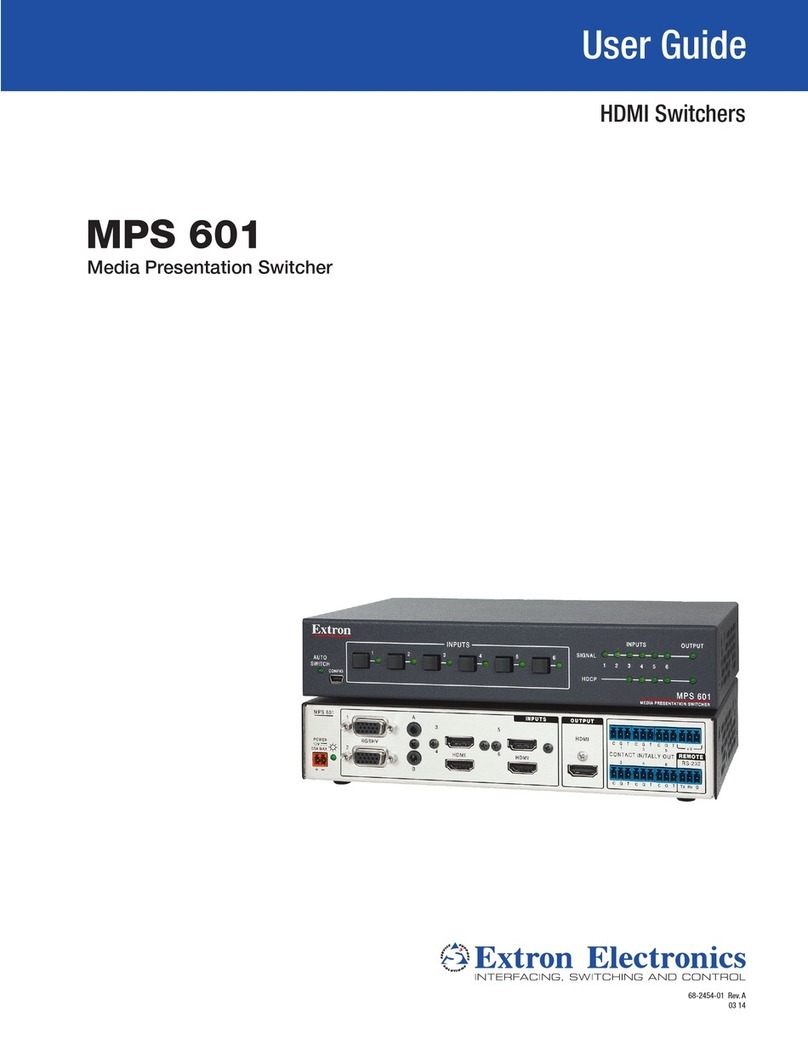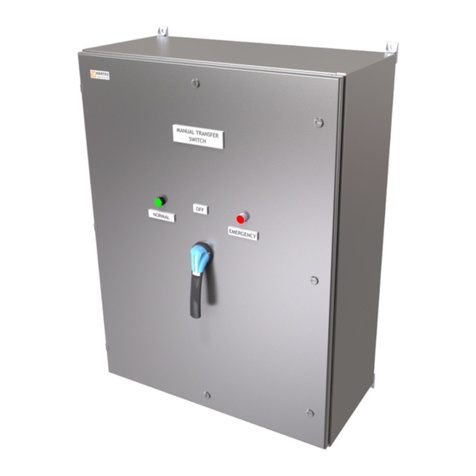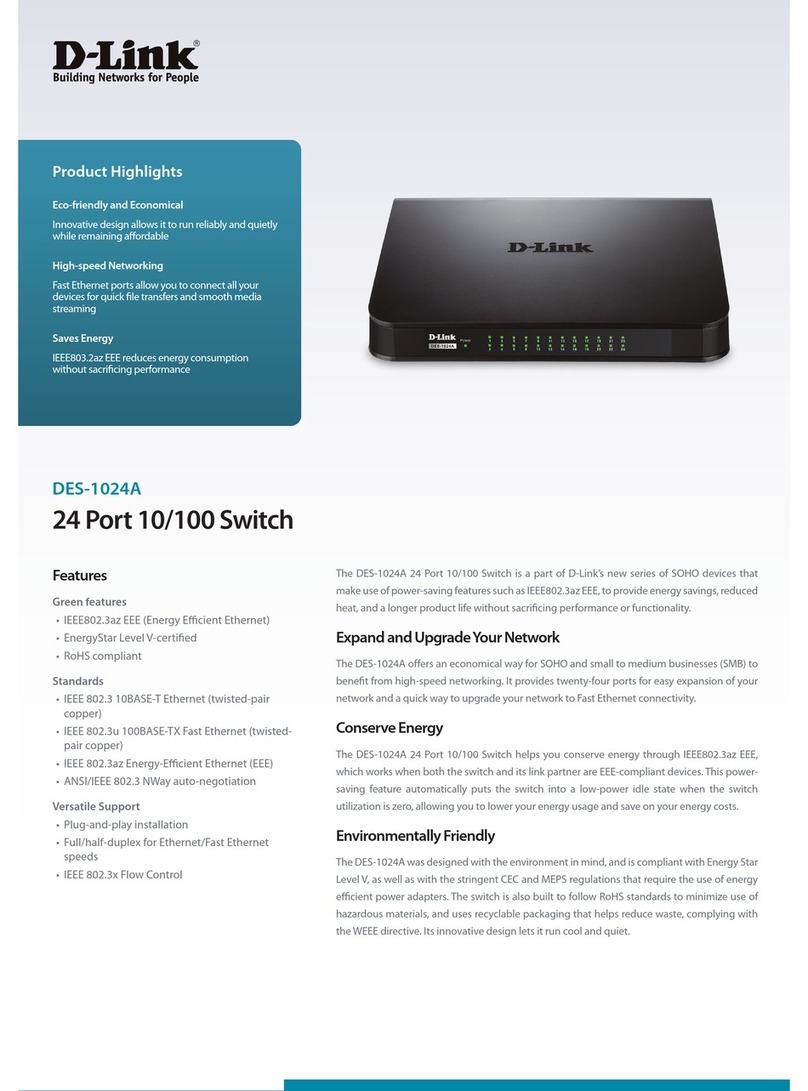IDEC HS1E Series User manual

HS1E Series Safety Products
B1-30 www.idec.com USA: (800) 262-IDEC or (408) 747-0550, Canada: (888) 317-IDEC
B1
Safety Products
HS1E
Key features include:
• Basic unit and solenoid unit in one housing
• Plastic Housing: Light weight
• Ease of Wiring: All the terminal screws are M3.5.
• Available with a red or green indicator
• Choose from 4 circuit configurations
• When mounting the key on a movable door, and the switch on a machine body, the door can be
mechanically locked when closed.
• Greater Safety: The door is unlocked by a solenoid lock-release signal from a PLC or other source
after the machine has stopped.
• In the event of power failure or for machine maintenance, the door can be unlocked using a special
tool.
• Flexible Installation: The key can be accessed from two directions.
• Also available is a manual unlock key type.
HS1E Series Full Size Interlock Switch with Locking Solenoid
Direct Opening Action
GS-ET-15
BG standard in Germany
EN1088
EN60947-5-1
IEC60947-5-1
Double Insulation
Certificate No.
2005010305145656
HS1E Series Functionality
Conduit Port: G1/2 Contact Mechanism
(Direct Opening Action)
LED Indicator
Terminal Block (M3.5)
L-shaped Key
(mainly for hinged doors)
Terminal Block for the
Indicator (M3.5)
Straight Key
(mainly for sliding
doors)
Two Key Entry Slots
Key wrench for TORX*
screws (included with
the switch)
TORX* screw
*TORX is a registered trademark of Camcar Textron.
Adjustable Key
(mainly for hinged doors)

Safety Products HS1E Series
www.idec.com USA: (800) 262-IDEC or (408) 747-0550, Canada: (888) 317-IDEC B1-31
B1
Safety Products
Ordering Information
Indicator Rated Voltage:
4 (24V DC)
0 (without indicator)
Circuit Diagram No.
Main Circuit Auxiliary Circuit
Blank: 1NC+1NC 1NO/1NO
1: 1NC+1NC 1NO
2: 1NC+1NC 1NC+1NC
3: 1NC+1NC 1NC
HS1E - 2 4 4 K R - R
Indicator Color:
R (Red)
G (Green)
Manual Unlock Key:
K (with key)
Blank (without key)
Specifications
Conforming to Standards EN1088, IEC60947-5-1, EN60947-5-1(TUV), IISO14119,
GS-ET-19 (BG), UL508, CSA C22.2 No. 14 (c-UL)
Applicable Use IEC60204-1, EN60204-1
Operating Temperature –20 to +40˚C (no freezing)
Storage Temperature –40 to +80˚C
Operating Humidity 40 - 85% (no condensation)
Altitude 2,000m maximum
Rated Insulation Voltage (Ui) 300V (between LED or solenoid and ground: 60V)
Impulse Withstand Voltage (Uimp) 4 kV (between LED or solenoid and ground: 2.5 kV)
Insulation Resistance
(measured with 500V DC megger)
Between live and dead metal parts: 100 MΩminimum
Between live metal part and ground: 100 MΩminimum
Between live metal parts: 100 MΩminimum
Between terminals of the same pole: 100 MΩminimum
Electric Shock Protection Class II (according to IEC61140)
Pollution Degree 3 (IEC60947-5-1)
Degree of Protection IP67 (IEC60529)
Vibration
Resistance
Operating Extremes 10 to 55 Hz, minimum (amplitude 0.35 mm)
Damage Limits 50 m/sec2 (approx. 5G)
Shock Resistance 1,000 m/sec2 (approx. 100G)
Actuator Tensile Strength when Locked 1,500N minimum (per GS-ET-19)
Actuator Operating Speed 1 m/sec maximum
Positive Opening Travel 11 mm minimum
Positive Opening Force 20N minimum
Thermal Current (Ith) Main circuit: 10A, Auxiliary circuit: 3A
Rated Operating Current (Ie)
Rated operating voltage (Ue) 30V 125V 250V
Main
Circuit
AC Resistive load (AC12)
Inductive load (AC15) 10A
10A 10A
5A 6A
3A
DC Resistive load (DC12)
Inductive load (DC13) 6A
3A –
0.9A –
–
Auxiliary
Circuit
AC Resistive load (AC12)
Inductive load (AC15) –
–3A
–3A
3A
DC Resistive load (DC12)
Inductive load (DC13) 3A
––
0.9A –
–
Contact Gap Main circuit: 1.7 mm min., Auxiliary circuit: 1.2 mm min.
Operating Frequency 900 operations/hour max.
Mechanical Life 1,000,000 operations min. (at full rated load)
900 ops/hr (AC-12/250V, 6A)
Electrical Life 100,000 operations (rated load)
Conditional Short-Circuit Current 100A (per IEC60947-5-1)
Recommended Short
Circuit Protection 250V, 10A fuse (Type D01 based on IEC60269-1, 60269-2)
Solenoid Unit
Rated Operating Voltage 24V DC
Rated Current 235 mA
Coil Resistance 102Ω(at 20°C)
Pickup Voltage 20.5V maximum (at 20°C)
DropOut Voltage 2.4 minimum (at 20°C)
Allowable Voltage 26.4V max (continuous)
Insulation Class Class B
Indicator
Rated Operating Voltage 24V DC
Rated Current 10 mA
Light Source LED lamp
Lens Color Red or Green (12 mm dia. Lens)
Weight Approx. 500g
Specifications

HS1E Series Safety Products
B1-32 www.idec.com USA: (800) 262-IDEC or (408) 747-0550, Canada: (888) 317-IDEC
B1
Safety Products
Circuit Diagrams
Circuit Diagram No. Blank Circuit Diagram No. 1 Circuit Diagram No. 2 Circuit Diagram No. 3
Part Numbers
Part Numbers: Keys, Wrench & Screwdriver
Item Part Number Description
HS9Z-A1 Straight Key
(Mainly for sliding
doors)
HS9Z-A2 L-shaped Key
(Mainly for rotating
doors)
HS9Z-A3 Adjustable Key
HS9Z-T1 Key Wrench (included
with switch)
HS9Z-P1 Conduit Opening Plug
Photo Not
Available HS9Z-KEY1 Replacement Manual
Unlocking Key
Part Numbers: Body
Part Number Indicator Key Conduit Port
HS1E-①40R Without Without G1/2
HS1E-①44R-∗With Without G1/2
HS1E-①40KR Without With G1/2
HS1E-①44KR-∗With With G1/2
1. Special key wrench (HS9Z-T1) for removing the cover and manual unlocking
is included with the switch.
2. Specify the circuit diagram No. in place of ①.
3. Specify the indicator color (R or G) in place of *.
4. Order the key separately (not included with the switch).
Circuit Diagram No.
Main Circuit Auxiliary Circuit
Blank: 1NC+1NC 1NO/1NO
1: 1NC+1NC 1NO
2: 1NC+1NC 1NC+1NC
3: 1NC+1NC 1NC
1. “/” indicates paralleled contacts.
2. “+” indicates series contacts.
Circuit Diagrams
Auxillary
Circuit
Main
Circuit
Soleoid
Power
Microswitch is linked to
solenoid mechanically
Auxillary
Circuit
Main
Circuit
Soleoid
Power
Microswitch is linked to
solenoid mechanically
Auxillary
Circuit
Main
Circuit
Soleoid
Power
Microswitch is linked to
solenoid mechanically
Auxillary
Circuit
Main
Circuit
Soleoid
Power
Microswitch is linked to
solenoid mechanically

Safety Products HS1E Series
www.idec.com USA: (800) 262-IDEC or (408) 747-0550, Canada: (888) 317-IDEC B1-33
B1
Safety Products
Circuit Diagram No. Blank (Main Circuit: 1NC-1NC, Auxiliary Circuit: 1NO/1NO)
Circuit Diagram No. 1 (Main Circuit: 1NC-1NC, Auxiliary Circuit: 1NO)
Status 1 Status 2 Status 3 Status 4 Unlocked Manually
Switch/
Door
Status
•Door closed
•Machine ready to operate
•Solenoid de-energized
•Door closed
•
Machine cannot be started
•Solenoid energized
•Door opened
•Machine cannot be started
•Solenoid energized
•Door opened
•
Machine cannot be started
•Solenoid de-energized
•Door closed
•Machine cannot be started
•Solenoid de-energized
Door
Circuit Diagram
Main Cir. 3-4: Closed 3-4: Open 3-4: Open 3-4: Closed 3-4: Open
Aux. Cir. 1-2: Open 1-2: Closed 1-2: Closed 1-2: Closed 1-2: Closed
Solenoid 5-6: Power OFF 5-6: Power ON 5-6: Power ON 5-6: Power OFF 5-6: Power OFF
Status 1 Status 2 Status 3 Status 4 Unlocked Manually
Switch/
Door
Status
•Door closed
•Machine ready to operate
•Solenoid de-energized
•Door closed
•
Machine cannot be started
•Solenoid energized
•Door open
•Machine cannot be started
•Solenoid energized
•Door opened
•
Machine cannot be started
•Solenoid de-energized
•Door closed
•Machine cannot be started
•Solenoid de-energized
Door
Circuit Diagram
Main Cir. 3-4: Closed 3-4: Open 3-4: Open 3-4: Open 3-4: Open
Aux. Cir. 1-2: Open 1-2: Open 1-2: Closed 1-2: Closed 1-2: Open
Solenoid 5-6: Power OFF 5-6: Power ON 5-6: Power ON 5-6: Power OFF 5-6: Power OFF
Application Examples and Circuit Diagrams
Auxillary
Circuit
Main
Circuit
Soleoid
Power
Microswitch is linked to
solenoid mechanically
Auxillary
Circuit
Main
Circuit
Soleoid
Power
Microswitch is linked to
solenoid mechanically
Auxillary
Circuit
Main
Circuit
Soleoid
Power
Microswitch is linked to
solenoid mechanically
Auxillary
Circuit
Main
Circuit
Soleoid
Power
Microswitch is linked to
solenoid mechanically
Auxillary
Circuit
Main
Circuit
Soleoid
Power
Microswitch is linked to
solenoid mechanically
Auxillary
Circuit
Main
Circuit
Soleoid
Power
Microswitch is linked to
solenoid mechanically
Auxillary
Circuit
Main
Circuit
Soleoid
Power
Microswitch is linked to
solenoid mechanically
Auxillary
Circuit
Main
Circuit
Soleoid
Power
Microswitch is linked to
solenoid mechanically
Auxillary
Circuit
Main
Circuit
Soleoid
Power
Microswitch is linked to
solenoid mechanically
Auxillary
Circuit
Main
Circuit
Soleoid
Power
Microswitch is linked to
solenoid mechanically
1. Main Circuit: used to enable the machine to start only when the
main circuit is closed.
2. Auxiliary Circuit: used to indicate whether the machine circuit or
door is open or closed.
3. Terminals 7 and 8 are used for the LED indicator, and are isolated
from solenoid and door status.

HS1E Series Safety Products
B1-34 www.idec.com USA: (800) 262-IDEC or (408) 747-0550, Canada: (888) 317-IDEC
B1
Safety Products
Circuit Diagram No. 2 (Main Circuit: 1NC+1NC, Auxiliary Circuit: 1NC+NC)
Circuit Diagram No. 3 (Main Circuit: 1NC+1NC, Auxiliary Circuit: 1NC)
Status 1 Status 2 Status 3 Status 4 Unlocked Manually
Switch/
Door
Status
•Door closed
•Machine ready to operate
•Solenoid de-energized
•Door close
•
Machine cannot be started
•Solenoid energized
•Door open
•Machine
cannot be started
•Solenoid energized
•Door opened
•
Machine cannot be started
•Solenoid de-energized
•Door closed
•Machine cannot be started
•Solenoid de-energized
Door
Circuit Diagram
Main Cir. 3-4: Closed 3-4: Open 3-4: Open 3-4: Open 3-4: Open
Aux. Cir. 1-2: Closed 1-2: Open 1-2: Open 1-2: Open 1-2: Open
Solenoid 5-6: Power OFF 5-6: Power ON 5-6: Power ON 5-6: Power OFF 5-6: Power OFF
Status 1 Status 2 Status 3 Status 4 Unlocked Manually
Switch/
Door
Status
•Door closed
•Machine ready to operate
•Solenoid de-energized
•Door closed
•
Machine cannot be started
•Solenoid energized
•Door opened
•Machine
cannot be started
•Solenoid energized
•Door opened
•
Machine cannot be started
•Solenoid de-energized
•Door closed
•Machine cannot be started
•Solenoid de-energized
Door
Circuit Diagram
Main Cir. 3-4: Closed 3-4: Open 3-4: Open 3-4: Open 3-4: Open
Aux. Cir. 1-2: Closed 1-2: Closed 1-2: Open 1-2: Open 1-2: Closed
Solenoid 5-6: Power OFF 5-6: Power ON 5-6: Power ON 5-6: Power OFF 5-6: Power OFF
Application Examples and Circuit Diagrams con’t
Auxillary
Circuit
Main
Circuit
Soleoid
Power
Microswitch is linked to
solenoid mechanically
Auxillary
Circuit
Main
Circuit
Soleoid
Power
Microswitch is linked to
solenoid mechanically
Auxillary
Circuit
Main
Circuit
Soleoid
Power
Microswitch is linked to
solenoid mechanically
Auxillary
Circuit
Main
Circuit
Soleoid
Power
Microswitch is linked to
solenoid mechanically
Auxillary
Circuit
Main
Circuit
Soleoid
Power
Microswitch is linked to
solenoid mechanically
Auxillary
Circuit
Main
Circuit
Soleoid
Power
Microswitch is linked to
solenoid mechanically
Auxillary
Circuit
Main
Circuit
Soleoid
Power
Microswitch is linked to
solenoid mechanically
Auxillary
Circuit
Main
Circuit
Soleoid
Power
Microswitch is linked to
solenoid mechanically
Auxillary
Circuit
Main
Circuit
Soleoid
Power
Microswitch is linked to
solenoid mechanically
Auxillary
Circuit
Main
Circuit
Soleoid
Power
Microswitch is linked to
solenoid mechanically
1. Main Circuit: used to enable the machine to start only when the
main circuit is closed.
2. Auxiliary Circuit: used to indicate whether the machine circuit or
door is open or closed.
3. Terminals 7 and 8 are used for the LED indicator, and are isolated
from solenoid or door status.

Safety Products HS1E Series
www.idec.com USA: (800) 262-IDEC or (408) 747-0550, Canada: (888) 317-IDEC B1-35
B1
Safety Products
HS1E with indicator - using the straight key (HS9Z-A1)
HS1E with indicator - using the L-shaped key (HS9Z-A2)
Dimensions
23.523.5
RP
Actuator
Actuator Cover
Actuator
23.5
Mounting Hole Layout
3-M5 Screws
RP
210
49.5
129
121 26
ø5.4
R2.7
ø5.2
21
210
49.5
129
121
88 4
104
89
26
30 9
43
40
22
68.8
13.8
ø5.4
R2.7
ø5.2
30
9
43
40
22
13.8
54.3
35
39.7
6.5 ±1.0
35
39.7
8.5 ±1.0
26
89
45.4
33
45.4
21
89
33
88
104 4
RP: Actuator Mounting
Reference Position
Actuator Cover
23.523.5
23.5
Actuator
Actuator Cover
RP
Actuator Cover
Actuator
RP
Mounting Hole Layout
3-M5 Screws
210
49.5
129
121 26
ø5.4
R2.7
ø5.2
210
49.5
129
121 26
ø5.4
R2.7
ø5.2
35
39.7
35
39.7
26
89
22
40
43
30
6
61
11
17.5 ±1.0
40
43
30
6
46.5
22
11
19.5 ±1.0
45.4
21
89
33
88
104 4
45.4
21
89
33
88
104 4
RP: Actuator Mounting
Reference Position
All dimensions in mm.

HS1E Series Safety Products
B1-36 www.idec.com USA: (800) 262-IDEC or (408) 747-0550, Canada: (888) 317-IDEC
B1
Safety Products
Straight Key (mainly for sliding doors)
HS9Z-A1
L-Shaped Key (mainly for hinged doors)
HS9Z-A2
Adjustable Key
• The key angle is adjustable (0˚ to 20˚) for hinged doors.
• The minimum radius of the door opening can be as small as 100mm.
For HS1/HS2 Series (HS9Z-A3)
Accessories
2
7.4
Actuator Cover*
22 6.4
4-R3.2
30
49.3
22
2-M6
Tapped
Holes
Actuator
Mounting
Holes
weight: 22g
Key Cover*
Key
Mounting
Holes
2
4-R3.2
22
7.4
11
41.5
30
Actuator Cover*
*After installing the key, remove the key cover.
weight: 22g
Key Cover*
Stop Film
Angle Adjustment
(M3 Hexagon Socket Head Screw)
Door Hinge Side
20
5
30
R3.2
72
58
44
33 max.
12 (21)
1
20°
All dimensions in mm.

Safety Products HS1E Series
www.idec.com USA: (800) 262-IDEC or (408) 747-0550, Canada: (888) 317-IDEC B1-37
B1
Safety Products
Comparison between Adjustable and Non-adjustable Keys
Key Angle Adjustment
•
Using the screw (M3 hex socket head screw), the actuator angle can
be adjusted (refer to the dimensional drawing). Adjustable angle:
(0˚) to 20˚
•
The larger the adjusted angle of the actuator, the smaller the appli-
cable radius of the door opening.
• After installing the actuator, open the door. Then adjust the actuator
so that its edge can be inserted properly into the entry slot of the
safety switch.
• Recommended tightening torque: 0.8 N-m (approx. 8.0 kgf-cm)
• After adjusting the actuator angle, apply loctite or the like to the
adjustment screw so as to prevent its loosening.
Accessories con’t
Door Hinge
MinimumRadius
500mm
MinimumRadius
600mm
HS9Z-A52
Actuator
Minimum Radius
400mm
Door Hinge
800mm
Minimum Radius
HS9Z-A2
Actuator
Non-adjustable Key HS9Z-A2
Non-adjustable Key HS9Z-A1
HS9Z-A53
Actuator
MinimumRadius
100mm
Adjustable Key HS9Z-A3
HS9Z-A3
Key HS9Z-A2
Key
HS9Z-A1
Key

Safety Products Precautions
www.idec.com USA: (800) 262-IDEC or (408) 747-0550, Canada: (888) 317-IDEC B1-43
B1
Safety Products
• In order to avoid electric shock or a fire, turn the power off before
installation, removal, wire connection, maintenance, or inspection
of the switch.
• If relays are used in the circuit between the safety switch and the
load, consider degrees of the danger and use safety relays, since
welded or sticking contacts of standard relays may invalidate the
functions of the safety switch.
• Do not place a PLC in the circuit between the safety switch and the
load. The safety security can be endangered in the event of a mal-
function of the PLC.
• Do not disassemble or modify the switch. It may cause a breakdown
or an accident.
• Regardless of door types, do not use the safety switch as a door
stop. Install a mechanical door stop at the end of the door to protect
the safety switch against excessive force.
• Do not apply an excessive shock to the switch when opening or
closing the door.
• A shock to the door exceeding 1,000 m/sec2(approx. 100G) may
cause the contacts of the switch to chatter, and a malfunction of the
switch may occur.
• For connection of wires, unscrew the cover. Unnecessary loosening
of other screws may cause a malfunction of the switch.
• Prevent foreign objects such as dust and liquids from entering the
switch while connecting a conduit or wiring.
• If the operating atmosphere is contaminated, use a protective cover
to prevent the entry of foreign objects into the switch through the
actuator entry slots.
• Entry of a considerable amount of foreign objects into the switch
may affect the mechanism of the switch and cause a breakdown.
• Do not store the switches in a dusty, humid, or organic-gas atmo-
sphere.
For Rotating Head Directions
• The head of the HS5B can be rotated in 90° increments after remov-
ing the 4 screws on the corners of the head. Prevent entry of foreign
objects into the switch during removal of the head. Tighten these
screws with torque designated in the instruction sheet. Improper
torque may cause errors.
Minimum Radius of Hinged Doors
Wire Connection
• The HS2B has 3 conduit ports, which are closed as a part of the
molded switch housing.
• Make an opening for wire connection by breaking one of the con-
duit-port knockouts on the switch housing using a screwdriver.
• When breaking the conduit port, take care not to damage the con-
tact block or other parts inside the switch.
• Cracks or burrs on the conduit entry may deteriorate the housing
protection against water.
• When changing to another conduit port, close the unused opening
with an optional plug (Type No. HS9Z-P1).
Interlock Switch Safety Precautions
Operation Precautions - for all series
HS5B Precautions
Initial
Position Mounting in 3 Different Positions
Door Hinge
MinimumRadius
500mm
Minimum Radius
600mm
HS9Z-A52
Actuator
HS2B Precautions

Precautions Safety Products
B1-44 www.idec.com USA: (800) 262-IDEC or (408) 747-0550, Canada: (888) 317-IDEC
B1
Safety Products
Wire Connection
• Make an opening for wire connection by breaking one of the con-
duit-port knockouts on the switch housing using a screwdriver.
• Before breaking the knockout, temporarily remove the connector-fix-
ing lock nut from the switch.
• When breaking the knockout, take care not to damage the contact
block or other parts inside the switch.
• Cracks or burrs on the conduit entry may deteriorate the housing
protection.
• When changing to the other conduit port, close the unused opening
with an optional plug (accessory).
Manual Unlocking
• Remove the screw located on the unlocking entry at the side of the
switch using the key wrench included with the switch. Then insert a
small screwdriver into the switch to push the lever inside of the
switch toward the indicator until the actuator is unlocked (refer to
the diagram on the right).
• Insert a small screwdriver into the elliptical hole on the back of the
switch, then push the lever inside of the switch toward the indicator
until the key is unlocked (refer to the diagram on the right).
1. This unlocking method is intended for an escape from a
machine when a person is locked in. For access to the
unlocking entry, an access hole should be opened on the
mounting panel. When opening the hole, apply proper pro-
tection against water or other foreign objects.
2. Caution: After the unlocking operation, put the screw
back into the unlocking entry for safety.
• Regardless of door type, do not use the safety switch as a locking
device. Install a locking device independently, for example, using a
metal latch (also applicable to Type HS1E).
• The safety switch cover can be only removed with the special key
wrench supplied with the switch or with the optional screwdriver
(applicable to HS1B and HS1E).
• Remove the screw located on the unlocking entry at the side of the
switch using the key wrench included with the switch. Then insert a
small screwdriver into the switch to push the lever inside of the
switch toward the indicator until the actuator is unlocked (refer to
the diagram on the right).
Caution: After the unlocking operation, put the screw back
into the unlocking entry for safety.
HS1E Precautions
Type No.: HS9Z-P1
Plug (For G1/2)
Plug (For G1/2)
Type No. HS9Z-P1
Screwdriver
Lid
UNLOCK UNLOCK
Normal
Position Manual
Unlocking
Position
HS1C Precautions
Screwdriver

Safety Products Precautions
www.idec.com USA: (800) 262-IDEC or (408) 747-0550, Canada: (888) 317-IDEC B1-45
B1
Safety Products
Applicable Crimping Terminals
• (Refer to the Crimping Terminal 1 or 2 shown in the drawing below.)
• HS1C
Terminals No. 1 to 6: Use solid or stranded wires only (crimping ter-
minals not applicable).
Terminals No. 7 and 8: Crimping Terminal 1
Ground Terminal: Crimping Terminal 2
• HS1B
Ground Terminal: Crimping Terminal 2
Other Terminals: Crimping Terminal 1
HS2B, HS5B, and HS1E
Crimping Terminal 1
Use an insulation tube on the crimping terminal.
Installation Examples (see the diagrams below)
Applicable Connectors (As shown below)
• Use connectors which maintain the IP67 protection.
• Applicable Connector Dimensions
• Flex Conduit: VF03 (Japan Flex) www.nipolex.co.jp
• Steel Connector (G1/2): ALC-103
(PF13.5): RBC-103PG13.5
Recommended Screw Tightening Torque
• HS1C: 5.0±0.5 N-m (approx. 50±5 kgf-cm)
(4 or 6 pcs of M5 hex socket head cap screws)
• HS1B: 5.0±0.5 N-m (approx. 50±5 kgf-cm)
(2 or 4 pcs. of M5 hex socket head cap screws)
• HS2B: 5.0±0.5 N-m (approx. 50±5 kgf-cm)
(2 pcs of M5 hex socket head cap screws)
• HS5B: 4.0±0.4 N-m (approx. 40±4 kgf-cm)
(2 pcs of M4 hex socket head cap screws)
• HS1E: 5.0±0.5 N-m (approx. 50±5 kgf-cm)
(4 or 6 pcs of M5 hex socket head cap screws)
• Key (HS9Z-A1/A2)
5.0±0.5 N-m (approx. 50±5 kgf·cm)
• (2 pcs. of M6 hex socket head cap screws)
Key (HS9Z-A51/A52)
• 2.0±0.2 N-m (approx. 20±2 kgf·cm)
(2 pcs of M4 hex socket head cap screws)
• 1.0±0.2 N-m (approx. 10±2 kgf·cm)
(2 pcs of M4 Phillips screws)
The screws are supplied by the user.
Applicable Wire Size
• HS1C: 0.5 to 0.75 mm2 (Terminals No.1, 2, 5 to 8)
1.0 to 1.25 mm2 (Terminals No.3, 4, and
grounding terminal)
• HS5B: 0.5 to 1.25 mm2
• HS1E: 0.5 to 1.25 mm2
Operation Precautions
7.6 max.
3.5 min. 3.8 max.
ø4.1 min.
L1 (mm)
Crimping Terminal 2
Crimping Terminal 1
6.9 max.
3.6 min. 3.5 max.
ø3.6 min.
L1 (mm)
Approx. 4mm Crimping Terminal
Wire
Insulation Tube
Door Stop
HS9Z-A1 Actuator
Door
Mounting on Sliding Doors
Latch
HS9Z-A1 Actuator
HS9Z-A2 Actuator
Mounting on Hinged Doors
G1/2 or PG13.5
9 mm max.
30 mm max.
This manual suits for next models
4
Table of contents
Other IDEC Switch manuals

IDEC
IDEC HS1C Series User manual
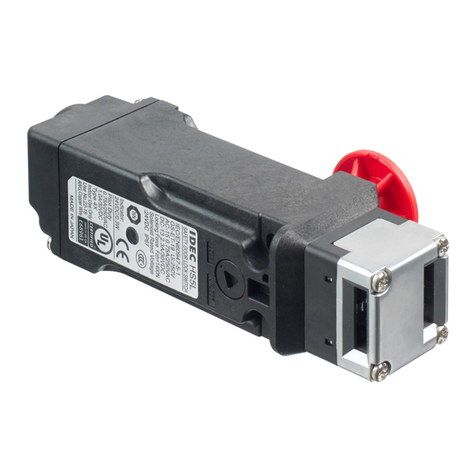
IDEC
IDEC HS5L Series User manual
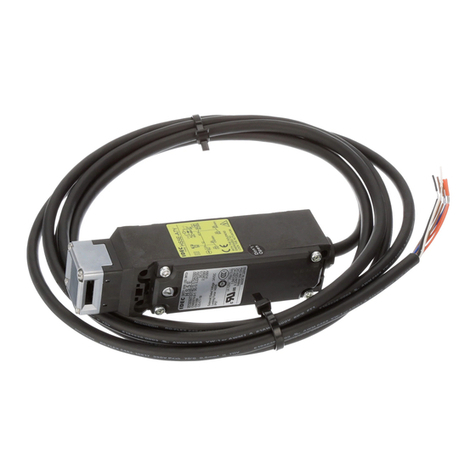
IDEC
IDEC HS5E Series User manual
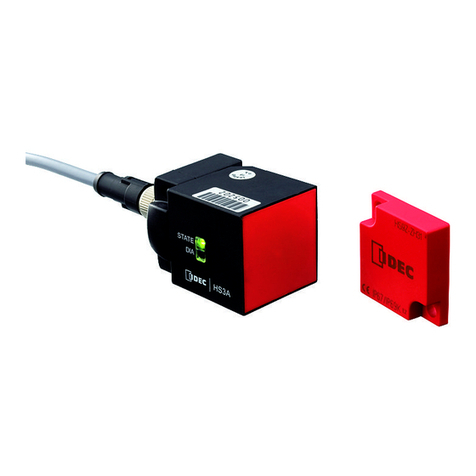
IDEC
IDEC HS3A Series User guide
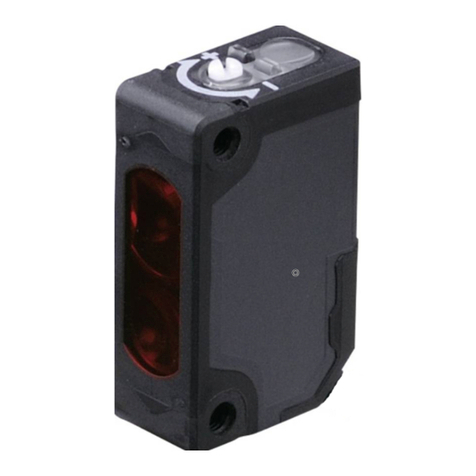
IDEC
IDEC SA1E Series User manual

IDEC
IDEC HS5E Series User manual

IDEC
IDEC HS5L Series User manual
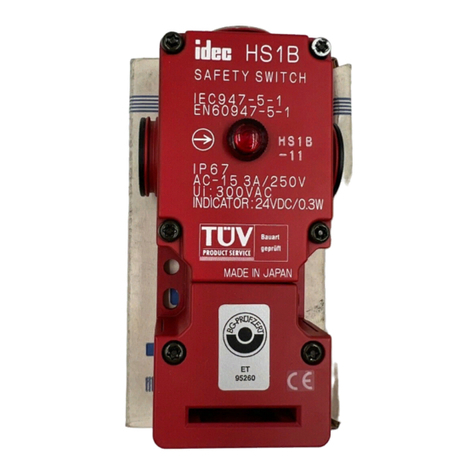
IDEC
IDEC HS1C Series User manual

IDEC
IDEC HS5E Series User manual

IDEC
IDEC SA1E Series User manual
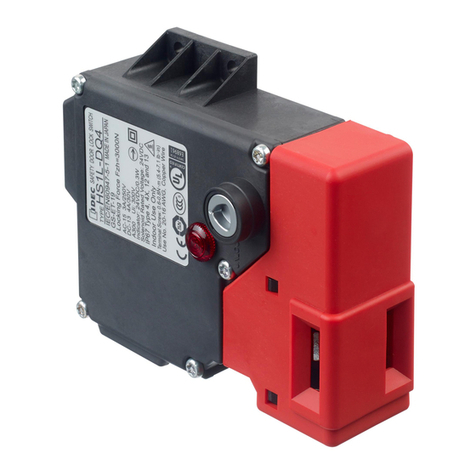
IDEC
IDEC HS1L Series User manual

IDEC
IDEC SX5E Series User manual

IDEC
IDEC SA1U Series User manual
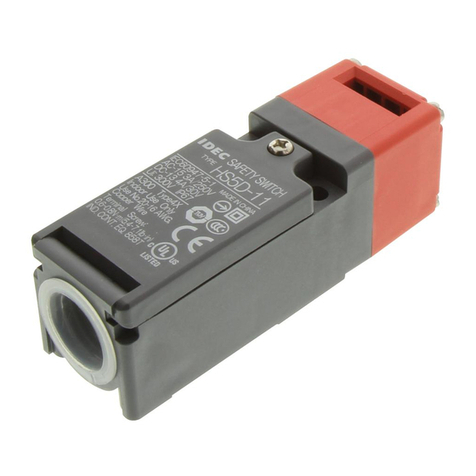
IDEC
IDEC HS5D-11 User manual

IDEC
IDEC SA1E Series User manual
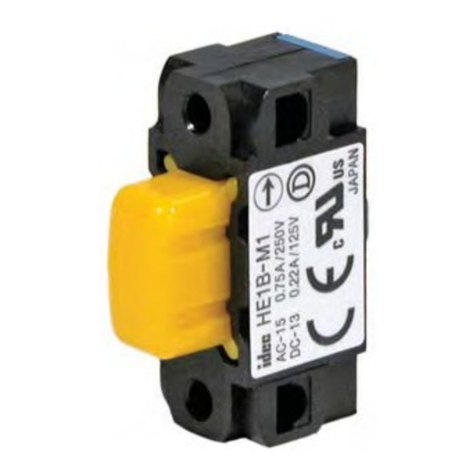
IDEC
IDEC HE1B Series User manual
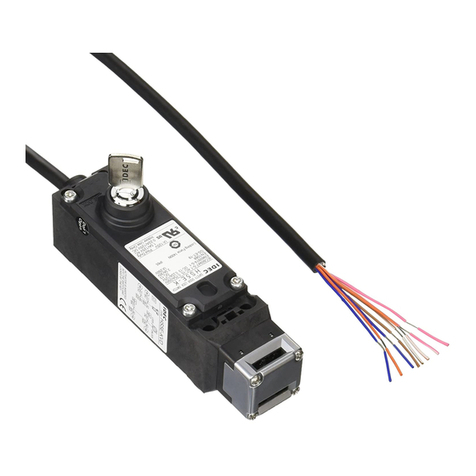
IDEC
IDEC HS5E-K User manual
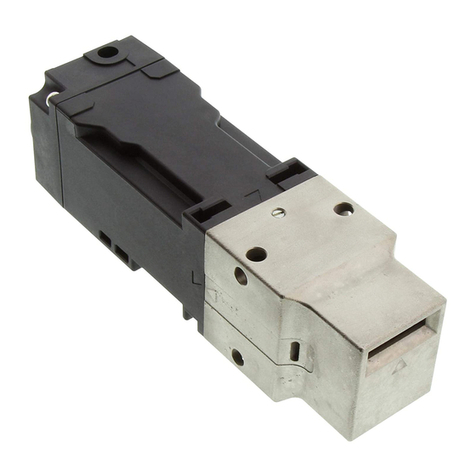
IDEC
IDEC HS1T Series User manual
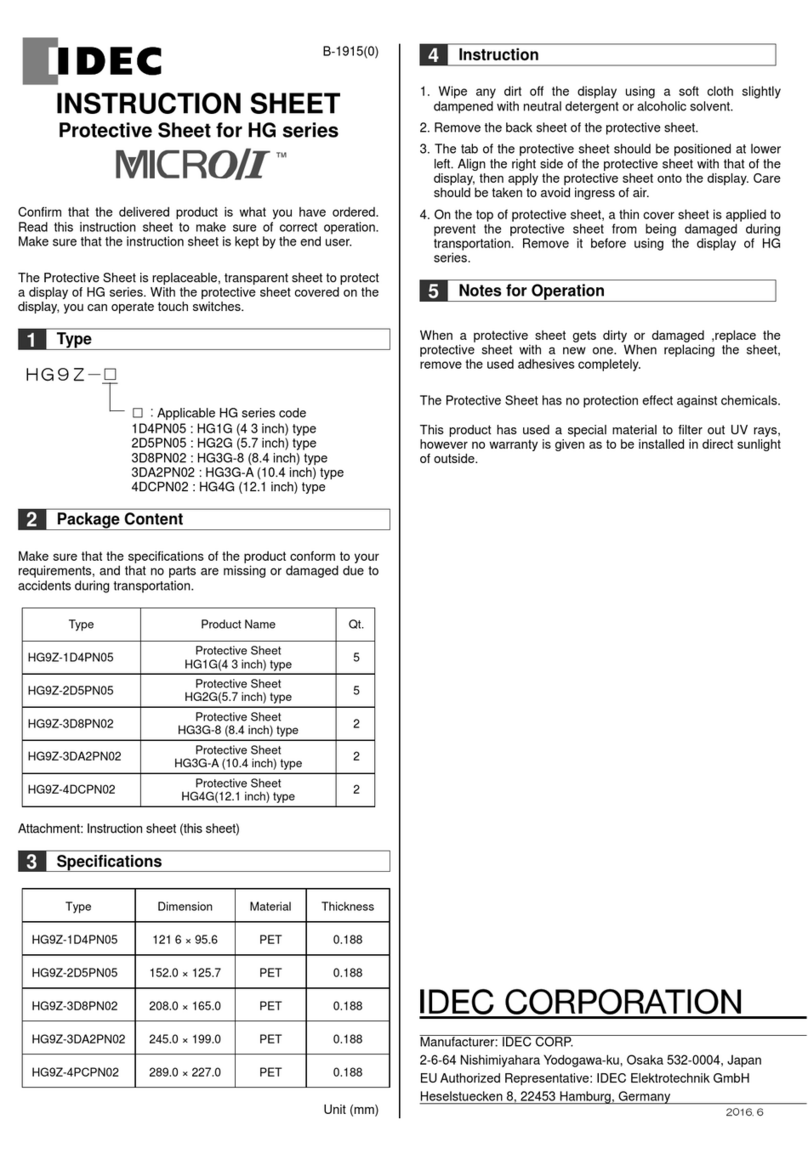
IDEC
IDEC MICRO/I HG9Z-1D4PN05 User manual
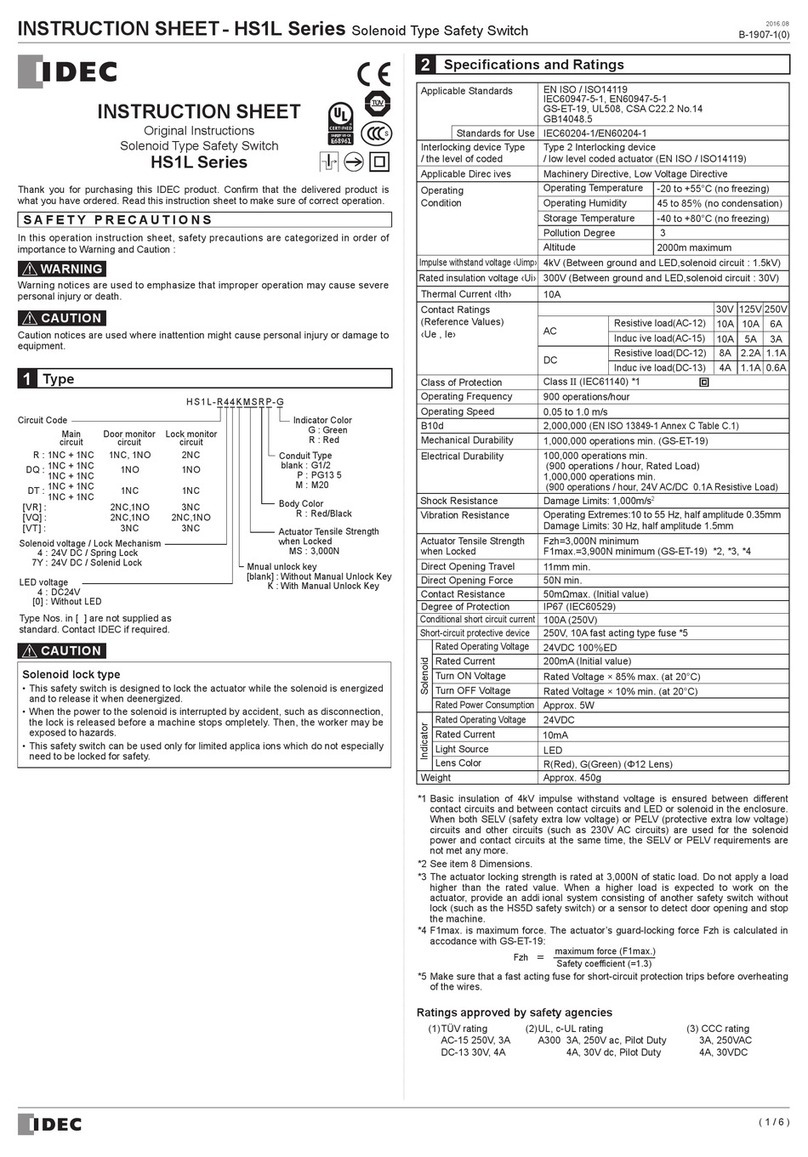
IDEC
IDEC HS1L Series User manual
